Disclosure: This article contains affiliate links. We may earn a commission from purchases at no extra cost to you, which helps our travel content.
The morning call to prayer had just faded when I stepped onto my hotel balcony, watching Casablanca awaken beneath a canvas of amber and rose. The city stretched before me—a fascinating juxtaposition of French colonial architecture alongside sleek modern developments and traditional Moroccan design. As a civil engineer, I've always been drawn to how cities evolve, but it was Casablanca's culinary landscape that truly captured my attention on this autumn visit. The economic capital of Morocco is experiencing nothing short of a gastronomic renaissance, where centuries-old cooking techniques meet contemporary innovation. Having explored food cultures across four continents, I was eager to document how this coastal metropolis balances preservation and progress on the plate. What I discovered over seven flavor-packed days was a city where every meal tells a story—of cultural resilience, creative adaptation, and the universal language of breaking bread together.
Navigating the Central Market: A Feast for the Senses
The Marché Central on Muhammad V Boulevard represents Casablanca at its most authentic—a sprawling network of vendors where locals have sourced ingredients for generations. Arriving early on my second morning proved strategic; by 8 AM, fishmongers were already arranging the day's catch in glistening displays while I had space to observe the market's architectural details—the subtle Art Deco influences in the iron framework overhead, remnants of the French Protectorate era.
Unlike the more tourist-oriented souks of Marrakech, Casablanca's central market operates primarily for residents, creating an environment where genuine interaction flourishes. Mohammed, a spice vendor whose family has occupied the same stall for three generations, invited me to sample his ras el hanout—a complex blend of up to 30 spices that varies from maker to maker. The structural engineer in me appreciated his methodical explanation of how each component contributed to the final product, not unlike how materials come together in a well-designed building.
What struck me most was how the market serves as both a commercial space and cultural preservation system. Young apprentices worked alongside elderly artisans, learning techniques that predate written recipes. In one corner, women prepared msemen (square-shaped, flaky flatbread) with a hypnotic rhythm—stretching, folding, and cooking the dough on large communal griddles. When I expressed interest in the process, they gestured for me to try my hand at folding the delicate layers, leading to good-natured laughter at my clumsy attempts.
I captured the market's vibrant atmosphere with my travel camera, which excels in these dynamic lighting conditions. The compact size allowed me to photograph discreetly, respecting the natural flow of daily commerce rather than disrupting it.
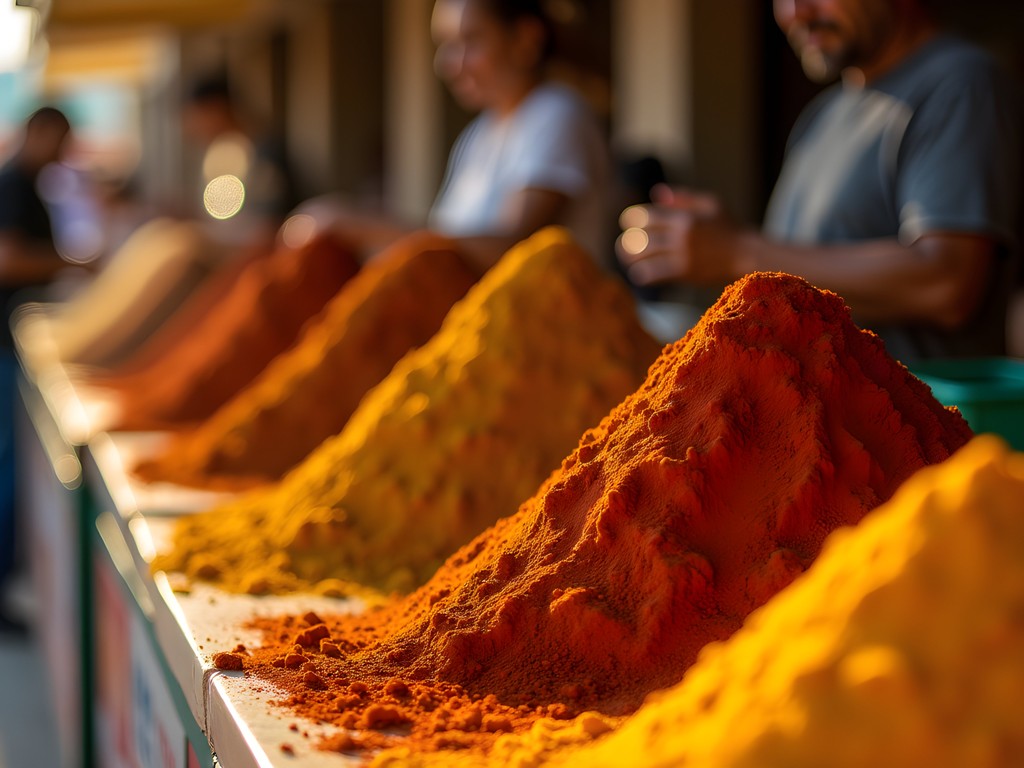
💡 Pro Tips
- Visit the Central Market before 9 AM to avoid crowds and see the freshest produce
- Bring small denominations of dirhams for purchases and sampling
- Ask permission before photographing vendors or their goods
Street Food Sanctuaries: Where Tradition Meets Accessibility
Casablanca's street food scene operates with a fascinating efficiency that appeals to my engineering mindset—specialized vendors perfect singular dishes rather than offering extensive menus. In the bustling Habous Quarter, I discovered what locals consider the city's finest bissara, a hearty fava bean soup topped with olive oil, cumin, and paprika. The vendor, operating from a modest cart with a single burner, has served this one dish for over 25 years. The soup's structural integrity—thick enough to support the oil but not so dense it becomes paste—demonstrated culinary precision that would impress any materials scientist.
Near the magnificent Hassan II Mosque, I followed groups of workers to a row of makeshift grills where sardines—fresh from the adjacent Atlantic—were being cooked simply with charcoal, salt, and a squeeze of lemon. At just 15 dirhams (approximately £1.20), this protein-rich lunch exemplifies how street food democratizes nutrition in a city with significant economic disparity.
My most memorable street food experience came in the old medina, where I discovered a multigenerational family operation specializing in sfenj—Moroccan doughnuts. The process was a marvel of workflow optimization: one person shaped the dough, another managed the frying, while a third handled transactions. The resulting pastry—crisp exterior giving way to a pillowy center—paired perfectly with mint tea from my travel mug, which kept it steaming hot as I wandered the narrow streets.
What makes Casablanca's street food scene particularly special is its accessibility to outsiders. Unlike some Moroccan cities where language barriers can complicate ordering, here I found vendors accustomed to international visitors, often using visual menus or display cases that simplify communication. Many even accepted contactless payment methods—a surprising technological adaptation in such traditional settings.

💡 Pro Tips
- Follow locals during lunch hours to find the most authentic street food stalls
- Carry hand sanitizer, though many vendors provide water and soap for handwashing
- Look for places with high turnover to ensure freshness
The Rise of Fusion Cuisine: Cultural Crossroads on the Plate
Casablanca's position as Morocco's business hub has cultivated a sophisticated dining scene where innovative chefs blend Moroccan traditions with global influences. At Le Cabestan, perched dramatically on the Corniche with Atlantic waves crashing below, I experienced a masterclass in Franco-Moroccan fusion. The restaurant's structure itself—built into the natural rock formations along the coast—demonstrates the harmonious relationship between built environment and natural landscape that I've always appreciated as an engineer.
Chef Issam's tasting menu began with a deconstructed pastilla—traditionally a savory-sweet pigeon pie—reimagined as delicate foie gras parcels dusted with cinnamon and powdered sugar. The technical precision required to balance these seemingly contradictory flavors reminded me of the careful calculations necessary when designing structures that must appear weightless while supporting significant loads.
In the trendy Gauthier district, I discovered Lily's, where a female-led kitchen creates dishes that honor Moroccan flavors while introducing Japanese minimalist aesthetics. Their signature dish—sea bass tagine with preserved lemon, olives, and yuzu—exemplifies how thoughtful fusion respects both culinary traditions rather than simply appropriating elements.
What fascinated me most was how these establishments approach sustainability. Several restaurants, including the innovative La Sqala (built within an 18th-century fortress), maintain direct relationships with small-scale farmers and fishermen. This farm-to-table approach not only ensures freshness but creates economic resilience within local food systems—a concept that parallels sustainable urban development practices I've implemented in my professional work.
For those interested in capturing these culinary creations, I found my smartphone tripod indispensable for low-light restaurant photography without disturbing other diners. The flexible legs allowed me to position it discreetly on tables or bar counters, capturing plating details that would be impossible with handheld shots.
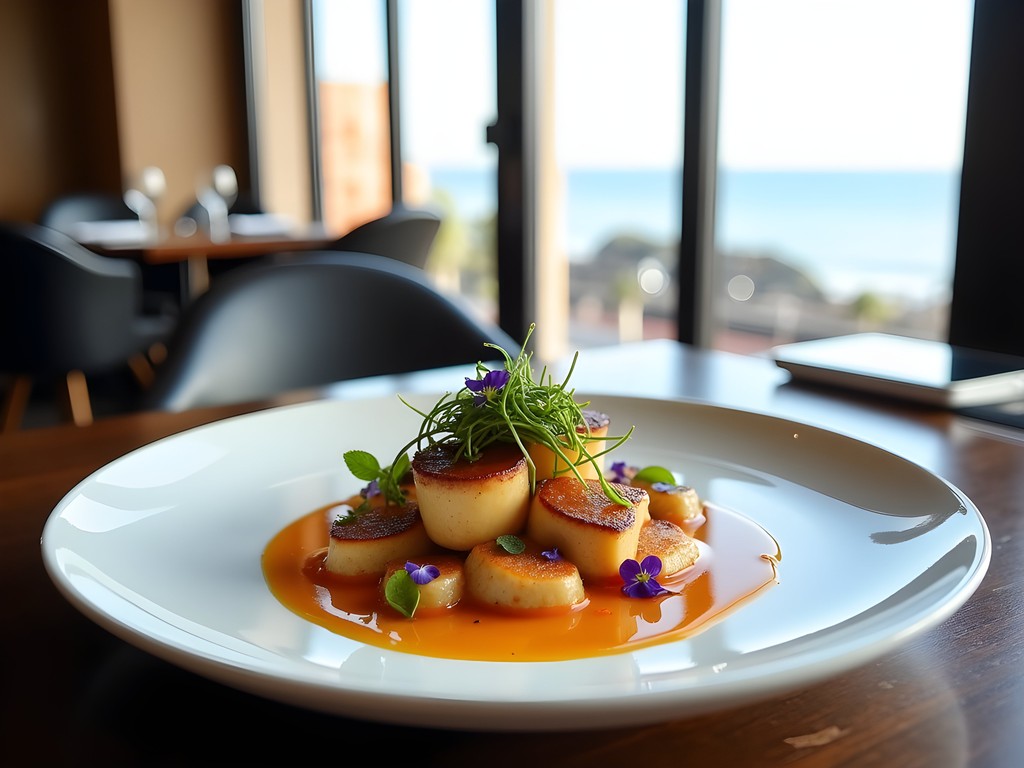
💡 Pro Tips
- Make reservations at least 3 days in advance for popular fusion restaurants
- Request corner tables at Corniche restaurants for the best views of the Atlantic
- Ask about chef's tasting menus, which often include experimental dishes not on the regular menu
Cooking with Locals: The Heart of Moroccan Hospitality
While Casablanca offers exceptional restaurant experiences, the most authentic culinary moments often happen in private homes. Through Traveling Spoon, a platform connecting travelers with local hosts, I arranged a cooking class with Fatima, a retired schoolteacher who has perfected her family recipes over decades.
Fatima's apartment in a 1950s residential building offered fascinating insights into mid-century Casablancan architecture—high ceilings with ornate moldings that merged European and Moroccan aesthetics. But it was her kitchen, with its perfectly calibrated tagine pots and well-worn wooden utensils, that truly captivated me.
"The tagine is Moroccan engineering at its finest," she explained as we prepared a lamb version with prunes and almonds. "The conical shape creates a natural convection system—steam rises, condenses, and drips back down, continuously basting the meat." As someone who analyzes structural efficiency professionally, I appreciated how this traditional cooking vessel solved complex thermodynamic challenges without modern technology.
We spent five hours preparing a complete meal, including khobz bread from scratch and a zaalouk (eggplant salad) that required patient, methodical preparation. Throughout the process, Fatima shared stories about how Casablanca's cuisine has evolved during her lifetime, particularly how ingredients once considered luxuries—like saffron and certain nuts—have become more accessible as Morocco's economy developed.
The meal itself, shared with Fatima's daughter and grandchildren who joined us, transcended mere sustenance. We discussed everything from sustainable urban development (my professional interest) to the challenges of preserving culinary heritage in a rapidly modernizing city. This intergenerational perspective provided insights no restaurant experience could offer.
For those interested in similar experiences, I recommend bringing a small food scale if you're serious about recreating recipes at home. Moroccan cooking often relies on visual and tactile cues rather than precise measurements, but having a scale helped me document proportions for future reference.

💡 Pro Tips
- Book home cooking experiences at least a week in advance
- Bring small gifts from your home country to thank your hosts
- Ask about family variations of classic recipes—these details aren't found in cookbooks
Sweet Endings: Exploring Moroccan Pastry Traditions
Moroccan pastry culture represents one of the most sophisticated confectionery traditions in the world—a complex interplay of Middle Eastern, Mediterranean, and French influences that's particularly evident in Casablanca's upscale patisseries and humble neighborhood bakeries alike.
At Pâtisserie Bennis in the Habous Quarter, I watched master pastry chefs create cornes de gazelle (gazelle horns)—crescent-shaped pastries filled with almond paste delicately scented with orange flower water. The precision in their movements reminded me of the meticulous attention to detail required in structural engineering. Each pastry maintained identical dimensions while incorporating subtle individual characteristics—a perfect balance of standardization and artisanship.
What particularly intrigued me was how Moroccan pastry traditions incorporate architectural elements. Many designs feature geometric patterns that echo the Islamic architectural principles visible throughout the city. At La Sqala, their signature dessert—a deconstructed baklava—was presented to mimic the geometric tile patterns (zellij) found in the restaurant's historic fortress walls. This deliberate connection between built environment and culinary creation resonated with my professional interest in how cultural values manifest across different disciplines.
In more contemporary settings like Paul Venice in the Morocco Mall, I observed how traditional pastries are being reimagined for modern palates. Their chebakia (sesame cookies soaked in honey) ice cream sandwich represents the kind of thoughtful innovation that honors tradition while embracing change—much like the sustainable retrofitting projects I've worked on that preserve historical structures while improving their functionality.
For capturing these intricate creations, I relied on my clip-on smartphone lens to document the fine details of pastry work. The ability to focus on minute textures and patterns allowed me to appreciate the craftsmanship that might otherwise go unnoticed.

💡 Pro Tips
- Visit pastry shops in late afternoon when many offer fresh batches of chebakia and other honey-soaked treats
- Purchase pastries by weight rather than piece for better value
- Try lesser-known regional specialties like makrout (date-filled semolina cookies) that aren't found in typical tourist guides
Final Thoughts
As my week in Casablanca drew to a close, I found myself reflecting on how the city's culinary landscape mirrors its architectural evolution—thoughtfully balancing preservation and innovation. From the centuries-old techniques still practiced in the Central Market to the boundary-pushing fusion restaurants along the Corniche, Casablanca offers couples a rare opportunity to taste a culture in transition. What makes this city special isn't just the exceptional food but the stories behind each dish—stories of cultural resilience, creative adaptation, and the universal desire to share one's heritage through flavors. Whether you're sampling street food from a modest cart or enjoying a sunset dinner overlooking the Atlantic, Casablanca invites you to participate in a living culinary tradition that continues to evolve with each generation. As an engineer who appreciates both precision and creativity, I found Casablanca's gastronomic scene to be a perfect reflection of how human ingenuity transforms simple ingredients into extraordinary experiences—a delicious lesson in how tradition and innovation can nourish each other.
✨ Key Takeaways
- Casablanca offers a more authentic, less touristy food experience than other Moroccan destinations
- The city's culinary scene reflects its unique position as both keeper of tradition and hub of innovation
- Home cooking experiences provide the deepest insights into Moroccan food culture
- Fall visits offer ideal weather for exploring outdoor markets and street food scenes
📋 Practical Information
Best Time to Visit
September to November
Budget Estimate
$75-150 per day excluding accommodation
Recommended Duration
5-7 days
Difficulty Level
Beginner

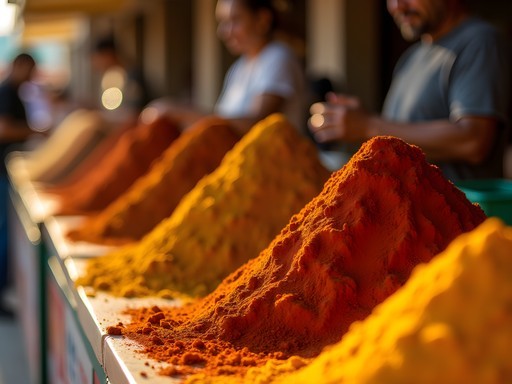

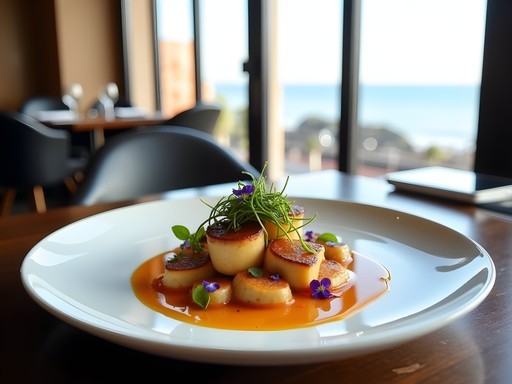




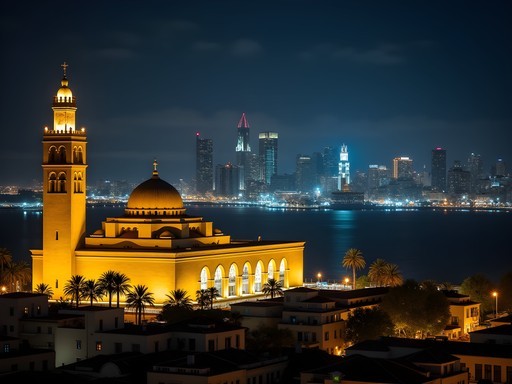

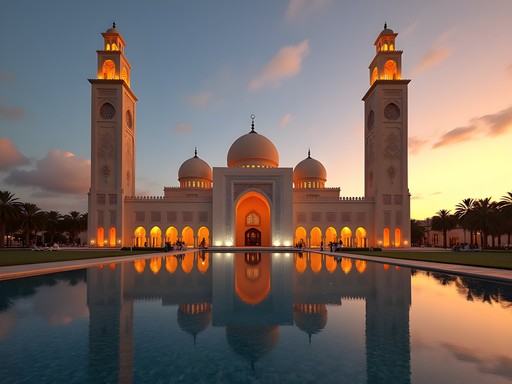
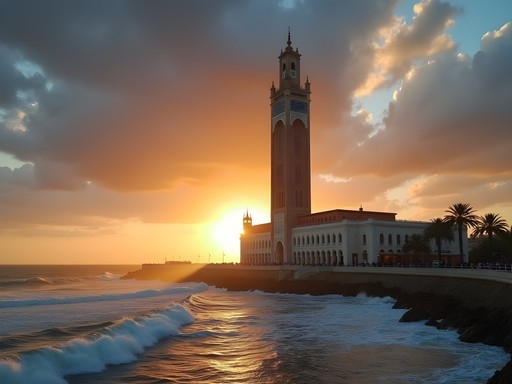
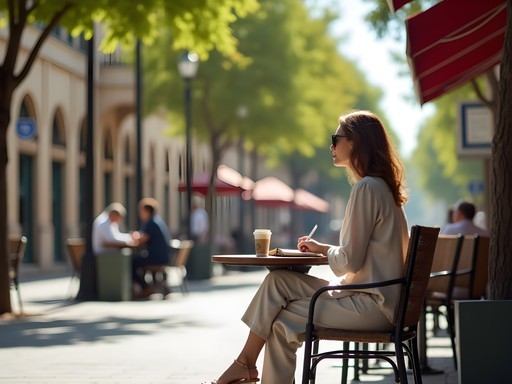



Comments
luckyadventurer
Those fusion restaurants sound amazing! Adding to my bucket list!
freeclimber
Any specific restaurant recommendations for someone with only 2 days in Casablanca? Your fusion cuisine section has me intrigued but there seem to be so many options!
Amanda Watanabe
For just 2 days: definitely try Le Riad for traditional Moroccan in a gorgeous setting, then Blend for amazing fusion (their seafood bastilla with a Japanese twist is incredible). And don't miss breakfast at Café de la Poste - historic spot with the best mint tea in town!
dreamadventurer
Great post! I'm planning a solo trip to Casablanca next month. How did you find the street food scene as a solo traveler? Was it easy to navigate and did you feel safe? Any specific stalls or dishes you'd recommend I shouldn't miss?
Amanda Watanabe
As a solo traveler, I felt very safe in the main areas! For street food, definitely try the msemen (flatbread) with honey in the mornings, and any stall selling harcha (semolina bread). The vendors near Hassan II Mosque were particularly friendly. Just keep your belongings close in crowded markets - normal travel precautions!
Taylor Moreau
I travel to Casablanca regularly for business and can confirm it's generally quite safe for solo travelers. I'd recommend carrying a good guidebook with maps since some of the medina areas can be confusing. I use pocket guide which has excellent food recommendations too. The street food near the old medina is exceptional - try the b'stilla if you see it!
luckyadventurer
This post brought back so many memories! I was in Casablanca last year and the food scene absolutely blew me away. The blend of French and Moroccan influences creates something truly unique. That market you mentioned was a highlight for me too - I spent hours wandering through the spice stalls and sampling everything I could. Did you try the seafood at the port area? Those little hole-in-the-wall restaurants serve the freshest catch I've ever had!
Amanda Watanabe
Yes! The port restaurants were incredible. I had a mixed seafood tagine that I'm still dreaming about. So glad this brought back good memories for you!
luckyadventurer
That tagine sounds amazing! I've been trying to recreate some dishes at home but it's never quite the same without that Moroccan atmosphere.
backpackwanderer
That shot of the sunset over the market with all the spice pyramids in the foreground is absolutely stunning! What camera do you use?
Sarah Powell
Your section on cooking with locals resonated deeply with me. During my solo trip last year, I took a cooking class in someone's home in the old medina, and it was the highlight of my journey. The grandmother teaching us barely spoke English, but the way she communicated through food transcended language barriers. We made a chicken tagine with preserved lemons that I've since recreated at home multiple times. For anyone visiting, I highly recommend seeking out these intimate cooking experiences rather than the commercial cooking schools. The authentic hospitality you described is something that can't be manufactured for tourists - it has to be experienced in a real Moroccan home.
freeclimber
Sarah, how did you find that home cooking class? Was it through a website or just asking around?
Sarah Powell
I actually found it through a recommendation from my riad host! Many family-run accommodations have these connections. Just ask when you check in!
springace
Great post! How safe is the street food for tourists? Any stomach issues? I'm a bit nervous about trying it when I visit next month.
backpackwanderer
Not Amanda, but I've been to Casablanca twice and never had issues with street food! Just look for busy stalls where locals eat and you'll be fine. The grilled sardines are amazing and totally safe!
Amanda Watanabe
Great advice from @backpackwanderer! I'd add: bring hand sanitizer, stick to freshly cooked hot foods, and maybe ease into it rather than going all-in on day one. The food hygiene at popular spots is generally quite good!
Gregory Boyd
Your analysis of Casablanca's evolving culinary scene is spot-on, Amanda. I've been documenting North African food transitions for years, and what's happening in Casa is particularly fascinating. The economic shifts are creating this unique space where traditional street food vendors are being celebrated rather than pushed aside as the fine dining scene grows. I spent a month there in 2023 and found the relationship between the two worlds much more symbiotic than in other rapidly developing cities. Did you notice any tension between the traditional food establishments and newer fusion spots? I'm heading back in November and would love to explore this further with my food guide in hand.
Amanda Watanabe
Great observation, Gregory! I didn't sense much tension - more of a respectful coexistence. Many of the fusion chefs I interviewed specifically mentioned how they source ingredients from traditional markets and incorporate classic techniques. The economic ecosystem seems intentionally interconnected.
summerbackpacker
Those fusion restaurants sound amazing! Adding to my list!
waveace
Amanda, your descriptions of the Central Market took me right back to my visit last year! That sensory overload of spices and sounds is unforgettable. Did you try the msemen from that tiny stall near the eastern entrance? The older woman who makes them has been there for decades according to my guide. Her harcha with honey was the highlight of my entire trip!
Amanda Watanabe
Yes! If we're thinking of the same stall, that woman's msemen was incredible. She showed me how she folds the dough - such skillful hands!
waveace
That's the one! Did she also tell you the story about how she learned from her grandmother? Such a special place.
Venture X
Premium card with 2X miles, $300 travel credit, Priority Pass